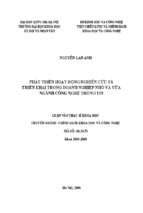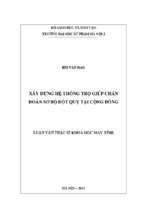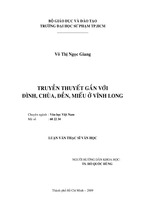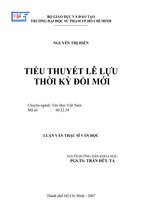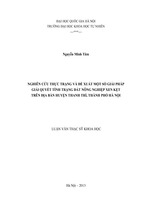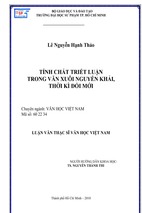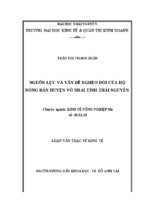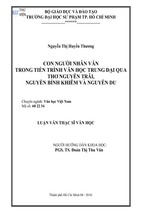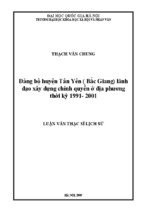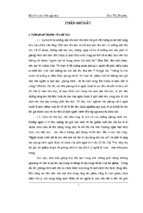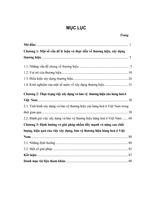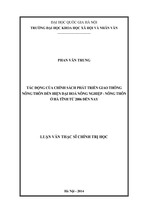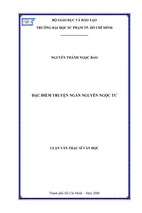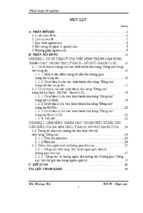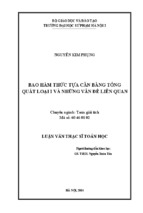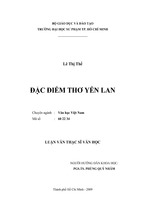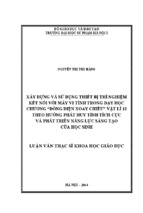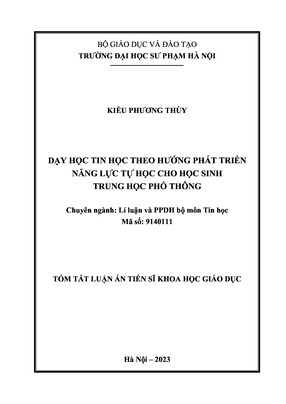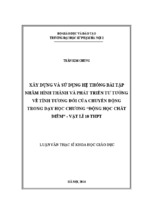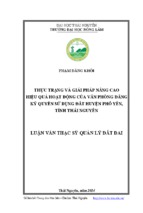VIETNAM NATIONAL UNIVERSITY, HANOI
UNIVERSITY OF LANGUAGES AND INTERNATIONAL STUDIES
FACULTY OF POST-GRADUATE STUDIES
---oOo---
NGUYỄN THỊ HẠNH
INFLUENTIAL INTRINSIC FACTORS
TO ENGLISH HOMEWORK EFFECTIVENESS
FROM THE PERSPECTIVE OF 11TH GRADERS
AT A HIGH SCHOOL IN VIETNAM
(NHỮNG NHÂN TỐ NỘI SINH ẢNH HƯỞNG ĐẾN TÍNH HIỆU QUẢ CỦA
BÀI TẬP VỀ NHÀ MÔN TIẾNG ANH THEO NHẬN THỨC CỦA HỌC SINH
LỚP 11 TẠI MỘT TRƯỜNG TRUNG HỌC PHỔ THÔNG TẠI VIỆT NAM)
M.A MINOR THESIS
Field: English Teaching Methodology
Code: 60140111
Hanoi - 2017
VIETNAM NATIONAL UNIVERSITY, HANOI
UNIVERSITY OF LANGUAGES AND INTERNATIONAL STUDIES
FACULTY OF POST-GRADUATE STUDIES
---oOo---
NGUYỄN THỊ HẠNH
INFLUENTIAL INTRINSIC FACTORS
TO ENGLISH HOMEWORK EFFECTIVENESS
FROM THE PERSPECTIVE OF 11TH GRADERS
AT A HIGH SCHOOL IN VIETNAM
(NHỮNG NHÂN TỐ NỘI SINH ẢNH HƯỞNG ĐẾN TÍNH HIỆU QUẢ CỦA
BÀI TẬP VỀ NHÀ MÔN TIẾNG ANH THEO NHẬN THỨC CỦA HỌC SINH
LỚP 11 TẠI MỘT TRƯỜNG TRUNG HỌC PHỔ THÔNG TẠI VIỆT NAM)
M.A MINOR THESIS
Field: English Teaching Methodology
Code: 60140111
Supervisor: Assoc.Prof. Dr. Lâm Quang Đông
Hanoi - 2017
DECLARATION
Title: “Influential intrinsic factors to English homework effectiveness
from the perspective of 11th graders at a high school in Vietnam”
I certify that no part of the thesis has been copied or reproduced by me from any
other works without acknowledgement and that the thesis is originally written by
me under strict guidance of my supervisor.
Hanoi, 2017
Student’s signature
Nguyễn Thị Hạnh
i
ACKNOWLEDGEMENTS
First of all, I would like to sincerely thank my supervisor, Assoc.Prof. Dr. Lâm
Quang Đông, for his support, guidance, advices, valuable comments, suggestions,
provisions, love and care which benifited me much in the completion and success of
this study.
Secondly, my sincere grattitude is extended to the respectable teachers and loveable
students at the investigated school who allowed me to distribute the questionnaires,
enthusiastically answered them and helped me a lot in conducting the interview.
My thanks and gratitude also go to all professors and lecturers at Faculty of PostGraduate Studies, University of Languages and International Studies, Vietnam
National University, Hanoi for their valuable lectures.
Last but not least, I would like to send my gratitude to my parents, all members in
my family and my friends for always showing their loving support and
encouragement to me when writing this thesis.
ii
ABSTRACT
This study investigated the influential intrinsic factors to English homework
effectiveness from the perspective of 11th graders at a Vinhphuc high school. The
intrinsic factors mentioned included assignments characteristics and classroom
factors. The survey questionnaires were distributed to one hundred and four English
specialized 11th graders at a Vinhphuc high school. A follow-up interview with
three students was also carried out so as to clarify and elucidate the questionnaires'
findings. The results showed differences between students' perceptions of intrinsic
factors in reality and students' expectations about them. On the basis of the findings
several pedagogical suggestions for teachers and parents were proposed with a view
to enhancing the effectiveness of homework in students' English learning.
Generally, teachers were suggested to provide students with more choices in their
homework and avoid repetition in homework. Regarding parents, they were advised
to facilitate students' homework completion by giving them a comfortable study
area and carefully consider when and how to involve in students' learning. With
significant findings and practical implications proposed, this study was expected to
be useful to English teaching and learning of the investigated school in particular
and of Vietnam in general.
iii
TABLE OF CONTENTS
DECLARATION ....................................................................................................... i
ACKNOWLEDGEMENTS ..................................................................................... ii
ABSTRACT ............................................................................................................. iii
LIST OF CHARTS AND TABLES ....................................................................... vi
CHAPTER I: INTRODUCTION ............................................................................1
1.1. Rationale ..............................................................................................................1
1.2. Aims and objectives of the study .........................................................................2
1.3. Significance of the study ......................................................................................3
1.4. Scope of the study ................................................................................................4
1.5. Structure of the thesis ...........................................................................................5
CHAPTER II: LITERATURE REVIEW...............................................................6
2.1. Homework in English language learning and teaching .......................................6
2.1.1. Definitions of Homework .................................................................................6
2.1.2. Factors Influencing the Utility of Homework ...................................................7
2.2. Related Studies .....................................................................................................9
2.3. Conclusive Remarks...........................................................................................12
CHAPTER III: METHODOLOGY ......................................................................13
3.1. Research Design: Mixed-methods research .......................................................13
3.2. Participant selection ...........................................................................................13
3.2.1. Population .......................................................................................................13
3.2.2. Sampling (proportional stratified sampling) ...................................................14
3.3. Data collection procedure ..................................................................................15
3.4. Data collection instruments ...............................................................................16
3.4.1. Questionnaire ..................................................................................................16
3.4.2. Interview .........................................................................................................16
CHAPTER IV: RESULTS AND DISCUSSION ..................................................18
4.1. Assigment characteristics ...................................................................................18
4.1.1 Amount .............................................................................................................18
4.1.2. Skills/Knowledge Utilized ..............................................................................19
iv
4.1.3. Purposes of Homework ...................................................................................21
4.1.4. Level of Difficulty...........................................................................................25
4.1.5. Degree of Individualization.............................................................................26
4.1.6. Level of Student Choice ..................................................................................28
4.1.7. Completion Deadlines .....................................................................................30
4.1.8. Social Context .................................................................................................31
4.2. Classroom factors ..............................................................................................32
4.2.1. Initial Classroom Factors ..............................................................................32
4.2.2. Classroom Follow-up Factors ........................................................................35
4.3. Conclusive Remarks...........................................................................................40
CHAPTER V: CONCLUSION .............................................................................42
5.1. Summary of the Findings ..................................................................................42
5.1.1. Assignment characteristics..............................................................................42
5.1.2. Clasroom factors .............................................................................................43
5.2. Implications ......................................................................................................43
5.3. Limitations of the Study ....................................................................................45
5.4. Suggestions for Further Studies ........................................................................45
REFERENCES ........................................................................................................47
APPENDICES ........................................................................................................... I
APPENDIX 1- Survey Questionnaire ................................................................. II
APPENDIX 2: Interview Questions ................................................................. IX
APPENDIX 3: Transcriptions of the Interview ..................................................X
v
LIST OF CHARTS AND TABLES
Table 1: A process model of factors influencing the effectiveness of homework
(Cooper, 2007, p. 23) ..................................................................................................8
Chart 1: The number of hour(s)/day spent on English homework ............................18
Table 2: The frequency of skills/ knowledge used to complete homework .............19
Chart 2: The frequency of skills/ knowledge used to complete homework ..............20
Table 3: The purposes of English homework assigned.............................................22
Chart 3: The Purposes of Homework ........................................................................22
Table 4: Other Homework Characteristics ................................................................24
Chart 4: Level of Difficulty.......................................................................................25
Chart 5: Level of Individualization ...........................................................................26
Chart 7: Completion Deadlines .................................................................................30
Chart 8: Social Context .............................................................................................31
Table 5: Initial Classroom Factors ...........................................................................32
Table 6: Follow-up Classroom Factors ....................................................................35
Chart 9: Classroom Follow-up – Feedback – Comment ..............................................36
vi
CHAPTER I: INTRODUCTION
1.1. Rationale
Homework is a topic which attracts public attention from students, parents,
pedagogues and researchers, etc. Many studies concerning homework have been
conducted, yet announced a variety of findings. Some researchers indicate that
homework is effective, while some show the contrary, some approve homework
assignment, whereas some raise objections. However, no matter if homework is
useful or harmful, it is undeniable that “homework is an important part of most
school-aged children’s daily routines” (Cooper, Robinson & Patall, 2006, p. 2) and
homework occupies a huge part of teachers’ and students’ lives.
Until now, there have been a great number of studies on homework, particularly
homework for English language learning. Researchers have been working on
different aspects of homework such as: the role of homework in foreign language
learning, the correlation between homework and student learning achievement,
homework from teachers’ and parents’ perspectives, the effects of homework on
students’ learning, et cetera, which will be discussed more in the literature review.
Generally speaking, they have made big efforts to find out to what extent homework
is effective in students’ learning process. Cooper, Robinson & Patall (2006, p. 9)
state, “Homework assignments are influenced by more factors than any other
instructional strategy.” However, the voice of students in what factors really impact
on the effectiveness of homework from their viewpoint has been investigated by
only few researchers. In Vietnam, the researcher of this study has not found any
research paper concerning the influential intrinsic factors to English homework
effectiveness from the perspective of 11th graders at a high school in Vietnam. Due
to the important role of students in learner-centered learning, students’ perceptions
should have been investigated more thoroughly in order to provide information to
assist the design and development of homework and homework policies which meet
students’ needs and promote students’ English learning.
1
In Vietnam, although the issues of homework are frequently put to discussion by the
mass media or in educational forums, attention is concentrated on homework in
elementary schools. In 2008, the Ministry of Education and Training of Vietnam
issued a clear guideline number 7720/BDGDT-GDTH on homework, which asks
teachers not to give homework to students in elementary schools who attend a fullday curriculum. There has been no policy guideline on homework for high school
students so far, while grade levels exert enormous influence on the effective of
homework and homework also has a big positive influence on the achievement of
high school students (Cooper, 1989). The issues of homework for English in high
school do not seem to be given enough attention by both Vietnamese researchers
and educational administrators. As an English teacher, I take a great deal of interest
in English homework given to high school students. Giving homework to my
students, I receive different responses from them. Students' viewpoints towards the
effectiveness of homework are diverse. Therefore, I have a strong desire of
investigating what factors influence the utility of homework for students’ English
learning from their own perceptions in order to design and set appropriate and
effective homework for my students.
With all factors above, I decided to conduct a case study of 11th graders at a
Vinhphuc high school which thoroughly investigates "influential intrinsic factors to
English homework effectiveness from the perspective of 11th graders." This study is
hoped to fill the gap in understanding of homework and contribute some practical
changes and improvement to Vietnamese education.
1.2. Aims and objectives of the study
This research paper aims to provide useful insight into the influential intrinsic
factors to English homework effectiveness from the perspective of 11th graders.
Being participants of the research, students are expected to show their own thoughts
about English homework and share their opinions of the intrinsic factors which may
have an impact on the utility of homework for their English learning. First, the
2
researcher investigated how students perceive the intrinsic factors, including:
assignment characteristic and classroom factors. Then, it is the researcher’s
intention to suggest a number of improvements that should be made to increase the
effectiveness of homework by minimizing negative factors and maximizing positive
factors.
With a view to achieving the aims mentioned above, the ultimate research question
that this paper will address is:
What are the influential intrinsic factors to English homework effectiveness from
the perspective of 11th graders?
1.3. Significance of the study
This study provides a description of high school students’ personal viewpoints on
the main factors which are considered have an impact on the academic effectiveness
of English homework. The perceptions elicited from students in this study are
expected to have practical significance to students, foreign language teachers,
parents, education administrators and researchers who have intention of developing
further studies on this topic.
Firstly, this study will be beneficial for foreign language teachers, particularly who
teach English at high schools. As the teaching time in class is limited, it is not
possible for teachers to thoroughly give lectures about new knowledge, check
students’ homework and pay their attention to find out the potential factors which
may affect the effectiveness of homework in students’ learning simultaneously.
This study is hoped to provide them with the general and clear views of students on
the factors influencing the utility of homework for their learning. By increasing
awareness of those factors, teachers may understand the advantages and
disadvantages that students have while doing homework. Thanks to that, they will
be able to make suitable adjustments in assigning and designing homework so as to
enhance the effectiveness of homework in student’s English learning. Secondly, as
3
for parents who perform a prominent role in the students’ learning process,
especially their self-study at home, the findings of this study may become a guide
for them on how to help and encourage their children’s learning by recognizing and
minimizing the negative factors and maximizing the positive factors influencing
homework effectiveness. Moreover, there are not any national education policies
and guideline on what homework at high school should be like, the regulations
controlling how homework is assigned and checked in class, etc. Then, with regard
to students, they will be the ones who take advantage of all adjustments and
improvement in homework for English based on their own needs and perceptions.
Finally, regarding researchers, this study will serve as a reliable reference for those
who have an interest in the topic of English homework in the future.
1.4. Scope of the study
Firstly, although there are two main kinds of factors influencing the effect of
homework according to the model of Cooper (2007), in the scope of a graduation
paper, it is impossible to cover both extrinsic and intrinsic factors. Correspondingly,
the researcher has chosen to investigate only intrinsic factors including assignment
characteristics and classroom factors. Secondly, the population size is restricted to
104 11th English specialized graders in the D-stream. The reason is that the total
number of 11th graders at the chosen Vinhphuc high school is quite large. It is not
recommended to cover such a huge population in a graduation paper which is about
14000 words long. Besides, 11th graders at the chosen high school are divided into
three streams of A, D, TN based on students' focused and specialized subjects.
Among three streams, students in D-stream classes specialize in English, while Astream and TN-stream students are not. It means that D-stream students are English
specialized, A-stream and TN stream students are non-English-specialized. It is
obvious that English is taught, learned, tested and perceived differently in two
groups of students, which may lead to differences in dealing with their homework.
Consequently, if the study covers both groups, the results may not be valid.
4
Therefore, the researcher has to restrict the size of population by focusing on
English specialized group. To sum up, the scope of this research is limited to the
influential intrinsic factors to English homework effectiveness from the perspective
of 11th English specialized students in D-stream at a Vinhphuc high school.
1.5. Structure of the thesis
The thesis is organized as follows:
CHAPTER I: INTRODUCTION – introduces the rationale; aims of the study;
research questions; significance of the study; and the thesis structure.
CHAPTER II: LITERATURE REVIEW – reviews and presents relevant theories
and studies to the study.
CHAPTER III: METHODOLOGY – describes the research design, the participants
selection, data collection procedure, data collection instruments.
CHAPTER IV: RESULTS AND DISCUSSION – presents an analysis of the data
and discusses the results of the study.
CHAPTER V: CONCLUSIONS – summarizes the study, limitations of the study
and suggestions for further research.
5
CHAPTER II: LITERATURE REVIEW
2.1. Homework in English language learning and teaching
2.1.1. Definitions of Homework
Homework has been globally accepted as part of the student routine in a wide range
of subjects, including English. Although there are numerous points of similarity
between homework of other subjects and homework of English, the researcher only
refers to the concept of homework in English language learning and teaching
throughout this research with a view to maintaining its consistency. In other words,
whenever the concept of homework is mentioned in the research, it is the homework
of English learning and teaching, not of other subjects.
The term homework is written in the Cambridge Dictionary as “work which
teachers give their students to do at home”. This definition has severely restricted
the place and the time in which homework is completed to students’ home and
students’ span of time at home only. However, this restriction has been removed by
researchers when many of them define homework as work intended to be completed
outside of school time (Wallingger, 2000). Carlsson (2009, p. 9) states, “homework
is assignment to be completed outside of the regular lessons but not necessarily
assigned to students by school teachers that are meant to be carried out during nonschool hours” (p. 15). This definition has been clarified by excluding “(a) in-school
guided study; (b) home study courses delivered through the mail, television, audio
or videocassette, or the Internet; and (c) extracurricular activities such as sports and
participation in clubs” (Cooper, Robinson, Patall, 2006, p. 1). The phrase “meant to
be carried out during non-school hours” means “students may complete homework
assignment during their study, or library time, or even during subsequent classes”
(Cooper, Robinson, Patall, 2006, p. 1).
6
Not only the restriction of the place and time is lifted, but the ways how students do
their homework are also re-defined by researchers, Kidwell (cited in Pham, 2011, p.
16) offers the definition of homework, which is “homework is any work or
activities that pupils are asked to do outside school time, either on their own or with
parents or careers”. According to this definition, homework is not necessarily done
by the student him/herself. Students can complete their homework with help from
their parents, friends, tutors, and carers et cetera. Hong & Milgram (2000) share the
same point of view with Kidwell (cited in Pham, 2011, p. 16) when they claim that
students can decide if they do homework or not and in which circumstances and
surroundings homework is complete, which is the difference between learning at
school and at home. In other words, doing homework, they can have their own
preferences and choices about “when, where, how and with whom they prefer to do
it” (Hong & Milgram, 2000, p. 4).
2.1.2. Factors Influencing the Utility of Homework
The success of homework is influenced by many factors. Those factors will be
discussed in this part of the study. As Cooper (1989) has highlighted, “because
homework goes home, we have to consider variations in out-of-school
environments when we think about what might determine the value of an
assignment” (p. 87), the factors influencing the effectiveness of homework are
considered to be diverse. In his work, Cooper (1989) has formed a process model of
factors influencing the utility of homework. Then, in 2007, he made several changes
in his model and introduced this new model in his book named “The batted over
homework” - the third edition. Certainly, these models cannot cover all of the
available factors; however, it shows many outstanding factors that are most often
mentioned by educators and parents (Cooper, 2007). The process model of factors
influencing the effectiveness of homework is shown in Table 1.
Four main factors influencing the success of homework assignment belong to two
main categories: intrinsic factors and extrinsic factors. The concept of intrinsic
factors and extrinsic factors should be clarified. Extrinsic factors are defined as
7
factors coming from outside something rather than within homework and do not
belong naturally to something. Accordingly, extrinsic factors of homework are
factors which operate from outside of homework. In the model of Cooper (2007),
extrinsic factors include student characteristics, subject matter, grade level and
home-community which totally do not belong to homework itself. On the contrary,
intrinsic factors belong to or are part of something. In the model of Cooper (2007),
assignment characteristics and classroom factors are considered intrinsic factors of
homework which have been discussed earlier, the next three columns of the model
express the process of homework completion, which is the reason why this model is
called the process model. This process involves two classroom stages and the last
column discusses final outcomes of homework including: assignment completion,
assignment performance and effects of homework.
Table 1: A process model of factors influencing the effectiveness of homework
(Cooper, 2007, p. 23)
Extrinsic Factors
Assignment
Characteristics
Student
characteristics
+ Ability
+ Motivation
+ Study habits
Subject mater
Grade level
Competitors for
student time
Home environment
Others’
involvement
Parents
Siblings
Other
students
Hotlines
After school
program
Amount
+ Total amount
+ Frequency of
assignment
+ Length of
each assignment
Easy and
difficult content
Purpose
Skill area
utilized
Degree of
student choice
Completion
deadlines
Social context
Initial
Classroom
Factors
Provision of
materials
+ Study aids
+ Use of the
computer
Suggested
approaches
Links to the
curriculum
Incentives for
completion
8
Classroom
Follow-up
Feedback:
+ Written
comments
+ Grading
Testing of related
content
Use in class
discussion
Outcomes or
Effects
Assignment
completion
Assignment
performance
Positive effects
+ Immediate
Academic
+ Long-term
academic
+ Nonacademic
+ Parental
Negative effects
+ Satiation
+ Denial of
leisure time
+ Parental
interference
+ Cheating
+ Increased
student
differences
2.2. Related Studies
As mentioned earlier, the battle over homework never ends and attracts the attention
of numerous parents, pedagogues and researchers. Therefore, a great number of
studies concerning homework have been carried out. In this part of the study, the
researcher will concentrate on reviewing and analyzing the studies which also deal
with factors influencing the success and failure of homework assignments,
especially the intrinsic ones.
It is important to be conscious that there are not many in-depth studies into the
factors having an impact on homework assignments’ effectiveness. Researchers
tend to investigate only one or a few factors among them. One of the most
comprehensive studies on those factors is Cooper (1989). The process model of
factors influencing the effect of homework has been developed by him after years
spent on reviewing and analyzing other researchers’ studies on homework issues. A
more detailed and adequate version of this model is introduced in Cooper (2007).
As being completed and edited several times after meta-analyzing a large number of
researchers, Cooper’s synthesis in general and his model of factors in particular are
invaluable reference to parents, educators and researcher who are interested in
homework issues. The new version of this model has been already shown and
explained briefly in the previous part of the study. Another study dealing with
homework and factors relating to homework is the master’s thesis of Watkins
(2012). This study aims at exploring “factors affecting student homework
completion – individual skills of language, math, and reasoning along with
motivation, quality of the assignment, teacher feedback, and the environment in
which homework is completed” (Watkins, 2012, p. 2). The researcher has attempted
to cover many factors which may have an impact on students’ homework
completion. However, one of the problems is the number of participants in the
study. Only 86 out of 401 students participate in the study, which may reduce the
reliability of results and conclusions.
9
The first intrinsic factor in Cooper’s model is assignment characteristics, including:
amount, difficulty, purpose, skill area utilized, degree of individualization, degree
of student choice, completion deadlines and social context. Sharing the same
interest with Cooper, Vatterott (2010) attempts to find out what make a homework
assignment effective. According to this researcher, there are five characteristics of a
good homework: “purposeful, efficient, personalized, doable and inviting”
(Vatterott, cited in Carr, 2013, p. 174). It can be easily noticed that both Cooper
(2007) and Vatterott (2010) consider purpose a significant feature of homework.
Nonetheless, Cooper is concerned with different purposes of assignments involving
instructional and non-instructional purposes, while Vatterott pays attention to the
purposefulness of homework. “Purposeful” means that homework assignments
should be meaningful. “Teachers should give students assignments that are
purposeful for them and methods that work for their learning styles” (Carr, 2013,
p.174). It means that purposes of homework assignments need to be understood
clearly by students and “students should leave classroom with no confusion about
either what they are being asked to do or how to do it” (Marzano, Gaddy & Dean,
cited in Protheroe, 2009, p.43). The study of Wilson and Rhodes (2010) indicates
that 43% of the students in the survey do not complete their homework as they do
not understand it. However, homework should never be assigned for the purpose of
punishment. Cooper (in Silvis, 2002, cited in Protheroe, 2009, p. 44) warns, “It
implies you think schoolwork is averse. Kids will pick up this message.” In order to
ensure the purposefulness of homework, Vatterott (2010) suggests that homework
should provide teachers with feedback on students’ understanding which will enable
teachers to make necessary adaptations to their instructions.
Efficiency is the second hallmark of an effective homework which is similar to
“amount” feature in Cooper’s list (2007) as it also about the amount of time spent
on homework, teachers should customize tasks to suit learning style, interest of each
student and provide them with choices in their assignments instead of forcing them
to do tasks that teachers want. It is not necessary for teachers to let students choose
10
everything in their assignments. Even “within compulsory homework assignments,
students can be given different degree of discretion concerning which or how many
parts of the assignment to complete” (Cooper, 2007, p. 17). Students in the study of
Watkins (2012) indicate that they want choices in their assignments.
With regard to “degree of individualization”, Vatterott (2010) states that one-sizefit-all approach has to be prevented and an effective homework should make
students feel competent. An easy assignment to one student may be extremely
difficult to another. Several students may have to spend only five minutes doing an
assignment which takes other students hours to complete. Therefore, it is necessary
for teachers to differentiate assignments so that they will be suitable for students’
needs and abilities in terms of level difficulty.
Finally, the last characteristic mentioned by Vatterott (2010) is the aesthetic appeal
which is totally absent from the process model of Cooper (2007). The way
homework looks should never be overlooked. “Wise teachers have learned that
students at all levels are more motivated to complete assignments that are visual
uncluttered. Less information on the page, plenty of room to write answers, and the
use of graphics or clip art make tasks look inviting and interesting” (Vatterott, 2010,
p. 15). In general, the lists of assignment characteristics influencing homework
success of both Cooper (2007) and Vatterott (2010) shares numerous things in
common. However, it seems that the list of Vatterott (2010) lacks a few important
features of homework which have been covered by Cooper (2007), namely skill
area utilized, completion deadlines and social context. Nonetheless, there is a
shortcoming in Cooper’s list is that Cooper fails to fully acknowledge the
significance of assignments’ visually appeal to the utility of homework.
Having homework done does not finish the homework process yet. The various
ways teachers response when homework assignments are brought back to school
should be considered thoroughly. A study performed by Deci, Connell and Ryan
(1989) indicates that “if students feel as though they are learning on their own and
11
receive feedback from their teacher about what they are doing correctly and what
they need to improve upon, they will be motivated to complete the assignment”
(cited in Watkins, 2011), which asserts the importance of different types of
feedback in homework completion. Xu (2011) supports this idea by stating in his
study that teachers’ feedback has a positive effect on students’ homework
completion. With regard to teachers’ response when homework is brought back to
class, researchers have many ways to classify feedbacks into different types
(Cooper, 1989; Cooper, 2007, Wallinger, 2000).
2.3. Conclusive Remarks
In this part, the key terms including homework, classifications, effects of
homework and the factors influencing the effectiveness of homework have been
presented and discussed. Besides, after reviewing a number of related studies and
theoretical frameworks, the research has discovered that the influential intrinsic
factors to English homework effectiveness from the perspective of 11th graders
have not been investigated by any researcher yet. This is the inspiration for me to
choose this topic. Also, the researcher has synthesized all of the information and
developed an adapted model of intrinsic factors influencing the utility of
homework which will be used as the framework for this study.
12
- Xem thêm -


